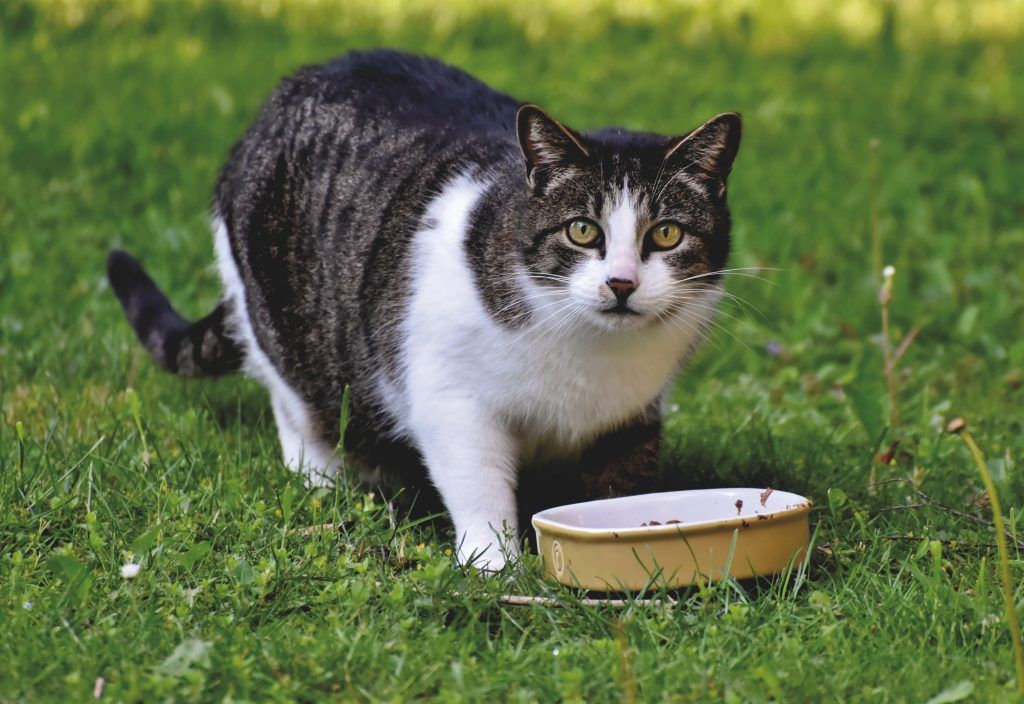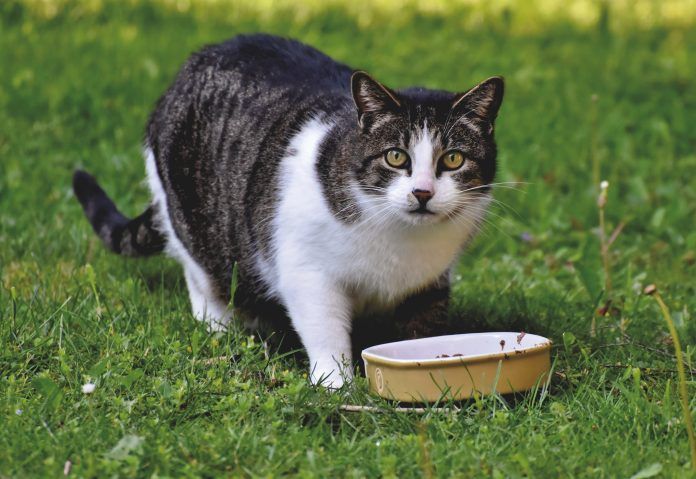The question of whether cats can eat pineapple intrigues many pet owners. As more unconventional human foods become trendy additions to pet diets, examining their safety is crucial. Pineapple’s tangy tropical flavor seems tempting to share with furry companions.
However, how does the feline physiology handle such novel fruits? This article delves into the nuances of the cat-pineapple dynamic – from nutrition to suitable preparation methods and potential health implications. By understanding cats’ needs, owners can make informed choices to nourish their pets.
Nutritional Composition of Pineapple
Pineapple is a sweet, vibrantly flavored fruit enjoyed worldwide. Its popularity stems from a nutrition profile rich in beneficial compounds and sensory appeal. Pineapples contain the enzyme bromelain, antioxidants like vitamin C, manganese for bone health, and some B vitamins. The tropical fruit provides fiber, potassium and trace amounts of calcium, magnesium and folate. With a blend of micronutrients and polyphenols that offer anti-inflammatory effects in humans, pineapple seems to promote wellness. But how do these components translate for feline consumers?
Feline Dietary Requirements
As obligate carnivores, cats have specific dietary adaptations. Their nutritional needs differ greatly from omnivorous humans. Cats require a high amount of protein from meat sources. Animal fat and oils are crucial energy sources, as cats cannot efficiently metabolize carbohydrates.
Cats also need higher levels of certain vitamins and minerals than plant-eating mammals. Taurine, arginine, vitamins A and B12, arachidonic acid, and others must come from meat. While small snacks of produce may appeal to some cats, fruits and vegetables cannot meet felines’ complete nutritional requirements.
Pineapple Consumption: Safe or Risky?
So where does pineapple fall for feline diets? Unfortunately pineapple itself provides no substantial nutrition for cats beyond trace carbohydrates and negligible vitamins. While delicious and nutritious for humans, some major concerns arise around cats consuming this fruit. Firstly, pineapple contains bromelain enzymes that help break down protein. But for short-digesting carnivores like cats, this could overtax the digestive system.
The high fiber and sugars in pineapple may also cause gastric upset. Secondly, pineapple’s acidity and citric juice could irritate cats’ mouth cavity and gastrointestinal tract. Owners report symptoms like vomiting or diarrhea after cats ingest pineapple. Beyond digestive troubles, the fruit sugars may contribute to obesity, dental issues and metabolic disorders in cats. While rare, allergies are also possible. Overall, vets recommend against offering pineapple.

Taurine: A Vital Nutrient for Cats
Taurine is an essential amino acid for cats’ health that enables proper vision, heart function, digestion and reproduction. As cats alone synthesize it naturally, it must be obtained from food. Deficiencies in taurine can cause major organ failure and blindness in cats. Unfortunately, pineapple contains no taurine to benefit cats.
Its carbs and sugars displace vital taurine sources like animal protein. Some pet owners try supplementing taurine after feeding fruit, but regulating optimal levels through diet is best. For taurine and complete nutrition, cat guardians should stick to quality, protein-focused commercial cat foods or consult vets on balanced homemade recipes.
Cats and Fruits: A General Outlook
Unlike their big cat cousins that consume herbivorous prey’s stomach contents, domestic cats lack evolutionary adaptations to derive nutrition from plant foods. The occasional lick of applesauce or fruit juice may seem harmless. However, cats lack specific enzymes to digest components like polyphenols, cellulose and pectins abundant in fruit.
Their short gastrointestinal tracts are intended for efficient protein breakdown. This makes fruit sugars and fibers a challenge to digest fully. Comparatively, pineapple contains more natural acids perilous for cats than other fruits. Safer people-food treats for cats include plain cooked meat, bone broths and moderate dairy. Overall, fruits of any kind provide little health value for felines.
Pineapple Allergies in Cats
In rare cases, cats may be allergic to the bromelain enzymes or proteins in pineapple. Symptoms of pineapple allergy include itchiness, skin irritation, alopecia, watery eyes, runny nose, sneezing, or anaphylaxis in severe reactions. Owners may notice red, raised welts or hives on the cat’s skin after licking pineapple.
Gastrointestinal signs like vomiting and diarrhea also occur. Cats with known allergies to kiwi or latex may exhibit cross-reactivity to pineapple allergens. While not extremely common, pineapple allergies in cats underscore the need for initial caution when introducing new foods.
Complexity of Feline Digestive Systems
To understand pineapple’s impact on cats, it helps to appreciate the complexity of feline digestion. From mouth to intestines, cats’ short specialized gastrointestinal tracts are adapted for optimizing utilization of proteins and fats. Powerful stomach acids immediately start breaking down food, without time for thorough chewing.
The small intestine has a quick transit time of 3-6 hours, compared to 12-24 hours in humans. Cats lack sufficient enzymes for digesting plant carbohydrates and phytochemicals before elimination. The simple sugars and citric acid in pineapple could disrupt the fragile gastrointestinal balance. Diarrhea and other digestive troubles indicate the cat has been overwhelmed by unsuitable fruit components.
Expert Opinions on Feeding Cats Pineapple
With pineapple’s popularity, many cat owners wonder if it’s truly risky. Veterinarians overwhelmingly advise against feeding fruit at all due to cats’ limited ability to digest plant matter safely. However, some progressive holistic vets acknowledge tiny amounts of pineapple may be tolerated, though not encouraged.
Starting with a 1/8 of a teaspoon for cats allows monitoring for issues. Even proponents stress pineapple provides zero benefits, and any fruit sugars should be balanced with additional protein. If attempting to introduce pineapple, owners should consult their vet, start slowly, and cease feeding immediately if any digestive upset occurs. Watermelon is suggested as a safer occasional fruit treat by some nutritionists. Most experts maintain meat and cat food should make up almost all of a cat’s intake.
Potential Benefits of Pineapple for Cats
What potential upsides exist from cats consuming pineapple? Advocates suggest trace nutrients like manganese which supports bone development and antioxidant effects from vitamin C could help cats. Pineapple’s bromelain enzymes may provide anti-inflammatory properties if digested. However, no studies confirm these benefits outweigh the risks for cats.
Any nutrients are present in miniscule amounts compared to a cat’s requirements. Meanwhile, adverse effects are widely documented. At best, pineapple is an unnecessary additive with a highly individual tolerance. Cat owners hoping to provide health advantages are better off sticking to nutritional cat foods formulated by experts. Exceedingly small portions of pineapple given sparingly may suit some cats, but benefits are unproven.
While enticingly novel, pineapple poses more significant risks than rewards for cats. The fruit’s high fiber and sugar exceeds cats’ digestive capabilities. Acidity and enzymes also irritate the oral cavity and gut lining. Diarrhea, vomiting, painful stomach cramps and other signs of acute indigestion commonly result from even small amounts.
The sugar load taxes the pancreas and small intestines. Repeated exposure leads to chronic issues like diabetes, obesity and tooth decay. Dental erosion from acidity allows bacteria accumulation and abscesses. Inflammation of the esophagus and stomach lining are also reported in pineapple-fed cats. Owners should be prepared to address these consequences if offering pineapple against recommendations.
Importance of Moderation and Portion Control
The adage “moderation is key” applies for cats and pineapple too. Yet what constitutes moderation for an obligate carnivore? At most, a few tiny pieces of fresh pineapple flesh totaling no more than 1⁄4 or 1/8 teaspoon can be offered a few times yearly, according to holistic vets. Amounts should be scaled down for smaller cats.
The treat should be an occasional minimal indulgence, not a regular occurrence. Watching for adverse reactions is crucial. Owners should ask – is this miniscule treat worth risking my cat’s health and wellbeing over?
Preparing Pineapple for Cats
If owners elect to share pineapple with cats after considering risks, proper preparation is mandatory. Select fresh, ripe pineapple. Remove all skin, rind, leaves, fibrous cores, seeds and woody parts, as these are choking hazards and difficult to digest. The fruit flesh should be cut into tiny, bite-sized cubes.
Only offer thawed frozen pineapple without added sugars or preservatives. Canned pineapple in juice should be strained well. Allow fresh pineapple pieces to sit for 10 minutes; the bromelain enzymes in contact with protein on their tongues get partially degraded. Cook methods like boiling reduce enzymes further. Discontinue feeding if the cat shows disinterest or negative symptoms arise.
Recognizing Signs of Pineapple Intolerance
Cats communicate dislike or discomfort with new foods through behavioral cues. Refusing pineapple outright indicates an instinctual food aversion. Difficulty swallowing, drooling, or pawing at the mouth signals irritation. Repeatedly vomiting, especially yellow liquid, shows pineapple is not agreeable.
Runny stools or obvious stomach pain imply intestinal inflammation. Activity level changes like lethargy or restlessness can accompany nausea. Symptoms arising hours later still relate to pineapple ingestion. Hairballs and constipation also result from poor digestibility. Knowing individual cats’ normal behavior helps identify adverse food reactions requiring veterinary attention.
Monitoring Your Cat’s Well-being
Cat owners have an ethical obligation to prioritize their pets’ well-being when considering unconventional diet choices. While pineapple’s appeal is understandable, minimizing risks is vital. Owners should start by consulting their veterinarian about the cat’s unique dietary needs. Introducing new foods requires vigilance for subtle changes in appetite, litter box use, energy levels and sociability that could indicate discomfort.
Routine veterinary checkups ensure cats remain in optimal health, especially if provided occasional fruit snacks. Annual bloodwork helps catch early indicators of organ strain or emerging illness to address promptly. Keeping accurate feeding records also helps pinpoint any correlates between diet and negative health developments.
Creative Pineapple Treat Recipes for Cats
For adventuresome owners, there are some creative recipes to incorporate tiny amounts of pineapple for cats to help with palatability. A popular choice is crushed pineapple tidbits stirred into plain yogurt, which tempers the fruit’s acidity. Tiny dehydrated pineapple pieces can provide crunch topping cat food.
Smoothies blended from cat milk or bone broth, egg yolk and a few pineapple chunks create a savory slushy treat. Always portion recipes conservatively and watch for signs of digestive upset. Recipes should never replace balanced cat food. Treat creation gives owners controlled options their vet can review to minimize fruit risks.
Insights from Case Studies and Cat Owners
Cat caregivers have varying accounts about offering their pets pineapple. Some observe no issues and report cats enthusiastically licking up provided pineapple pieces. However, a majority of owners see consequences like diarrhea, lethargy or repeated regurgitation after consumption. Cats with inflammatory bowel diseases fare worse. Older cats also exhibit more pronounced adverse reactions.
Cases of painful stomatitis and esophagitis requiring medication to control and heal after pineapple exposure exist. Starting with very small amounts is the only way to test if an individual cat may better tolerate pineapple. But owners ultimately question if the frivolous treat is worthwhile given more who report illness than health benefits for their cats.
Summing Up: Can Cats Have Pineapple?
Evaluating the full scope of potential pros and cons leads to an ultimate conclusion – pineapple provides no nutritional value and unnecessary risk for cats. The fruit’s composition including high fiber, sugar content and enzymes surpasses cats’ digestive capabilities.
Documented cases of toxicosis and gastrointestinal inflammation following pineapple ingestion are extensively reported, compared to negligible benefits. While a tiny portion very occasionally may satisfy some cats’ curiosity without issue, most evidence indicates pineapple is detrimental for cats to consume. Owners are best serving their felines by providing nutritionally balanced commercial or homemade cat food diets without superfluous fruit additions.
Conclusion: Nourishing with Care
Pet owners seek ways to indulge their cats and vary their experiences, including offering novel treats like pineapple. Yet a cat’s wellbeing must come first. Responsible cat guardianship involves fully understanding feline nutritional needs and limitations before incorporating additional foods. While pineapple excites some cats’ taste buds, it provides no real health values and poses hazards ranging from mild to life-threatening.
Educating oneself on the science-backed dietary requirements of cats is key to making wise, caring decisions. With knowledge and vigilance, owners can thoughtfully nourish the cats they cherish.

